By AIT Belt and Road Research Center
October 15, 2021 – A two-day webinar series on “Big Earth Data for the Sustainable Development Goals,” held on October 12 and 14, facilitates the sharing of cutting-edge big data research and technologies to achieve several of the Sustainable Development Goals (SDGs) -- prompting further academic collaboration.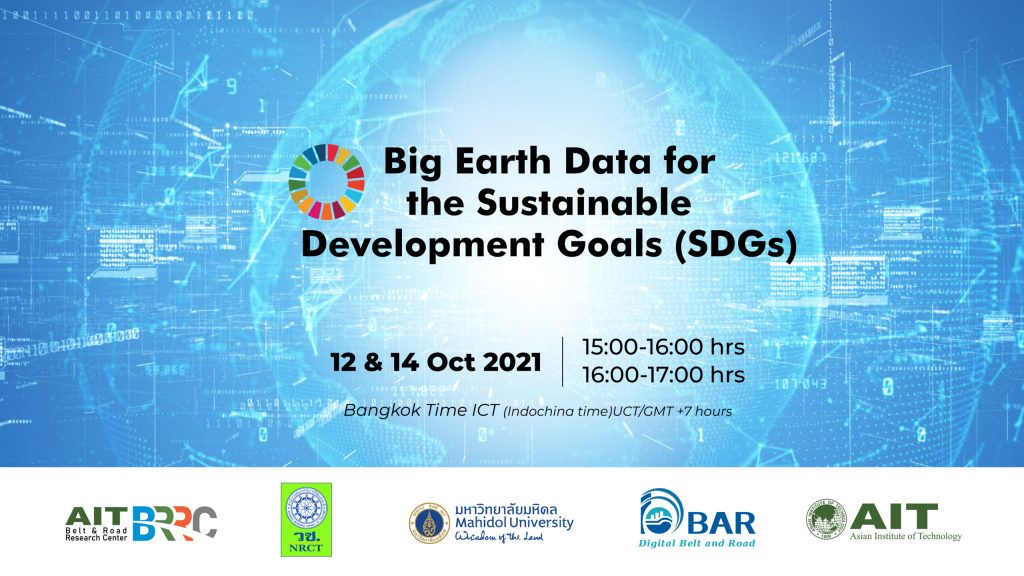 The webinar, jointly organized by AIT Belt & Road Research Center (AIT BRRC), National Research Council of Thailand (NRCT), Mahidol University (MU), and Digital Belt and Road (DBAR), aims to share data science and earth observation technologies developed by Chinese scientists with countries in Southeast Asia.
The webinar, jointly organized by AIT Belt & Road Research Center (AIT BRRC), National Research Council of Thailand (NRCT), Mahidol University (MU), and Digital Belt and Road (DBAR), aims to share data science and earth observation technologies developed by Chinese scientists with countries in Southeast Asia.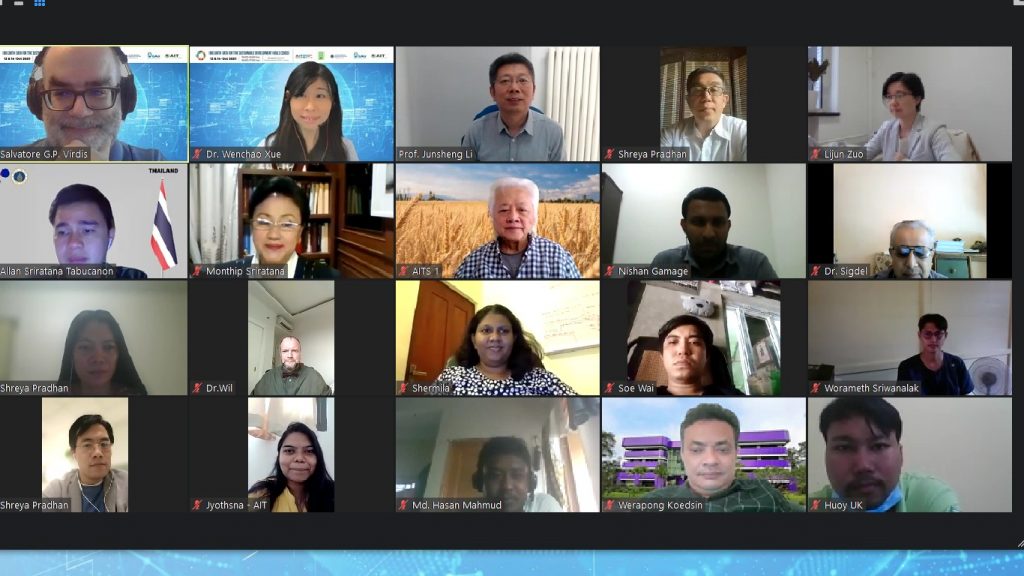 Dr. Wenchao Xue, Director of AIT BRRC, warmly welcomed the participants and introduced the webinar, stating that “To facilitate the knowledge sharing and exchange of experiences with Thailand and the Southeast Asian countries, regarding digital belt and road and its essential roles in supporting sustainable development goals, AIT BRRC is very pleased to join hands with our partners and deliver this DBAR Expert Talks Series”.
Dr. Wenchao Xue, Director of AIT BRRC, warmly welcomed the participants and introduced the webinar, stating that “To facilitate the knowledge sharing and exchange of experiences with Thailand and the Southeast Asian countries, regarding digital belt and road and its essential roles in supporting sustainable development goals, AIT BRRC is very pleased to join hands with our partners and deliver this DBAR Expert Talks Series”.
The two-day webinar series covered four Sustainable Development Goals (SDGs) by four expert guest lecturers from China. Prof. Junsheng Li, professor at Aerospace Information Research Institute, Chinese Academy of Sciences; Dr. Lijun Zuo, Associate Researcher of Information Research Institute, Chinese Academy of Sciences; Prof. Haifeng Gu, professor at Third Institute of Oceanography, Ministry of Natural Resources of China; and Dr. Qiang Xing from International Research Center of Big Data for Sustainable Development Goals served as the webinars’ guest lecturers, delivering lectures for knowledge exchange. Dr. Wenchao Xue, Dr. Salvatore G.P. Virdis, and Dr. Ekbordin Winijkul from AIT moderated different sessions and had in-depth discussion with the guest lecturers.
With technological advancement, Big Earth Data has become an integral part of our daily life as well as a compelling tool for the development of many industries. Currently, there is an enormous volume of data of the planet, generated by the Earth Observation systems from devices mounted on different platforms including satellites, airplanes, and ground-based platforms. There is also an abundance of other forms of data, such as geoscience, statistical, and social data. Integrating Earth Observation data with other forms of data holds potential to model the complexity of the Earth systems more accurately, as well as linking anthropogenic activity with resulting impacts on Earth processes – all of which can contribute to achieving the Sustainable Development Goals (SDGs).
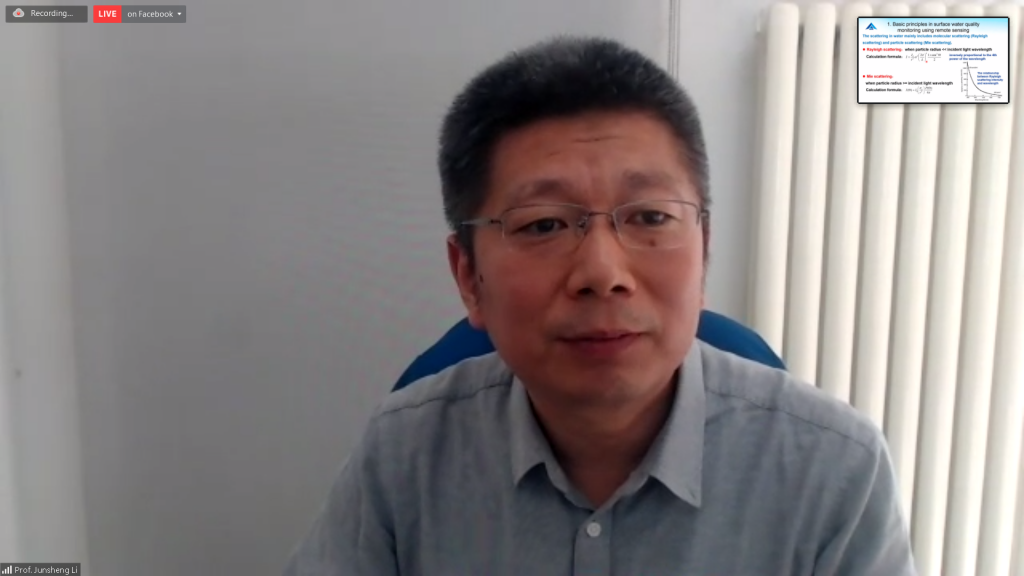
Prof. Junsheng Li, Aerospace Information Research Institute, Chinese Academy of Sciences
“Natural phenomena reflect scientific principles,” said Prof. Junsheng Li, whose topic was the surface water quality assessment related to SDG 6 - Clean Water and Sanitation, “The surface water quality is closely related to its characteristics and will be converted into big data through effective remote sensing indicators, so as to achieve the purpose of comprehensive assessment of water quality in a quite wide area.” In Professor Li's lecture, he introduced in detail the principles and data processing methods of surface water quality monitoring using remote sensing and shared his team's research outcomes with our audience.
As an expert mainly engaged in remote sensing research on land use changes and land space pattern optimization under a sustainable framework, Dr. Lijun Zuo introduced methodology and examples of cropland monitoring under the context of SDG 2 – Zero Hunger. Dr. Zuo also mentioned that Big Earth Data can effectively support the estimation of environmental impact of crop production and yield potential, thereby contributing to sustainable cropping systems.
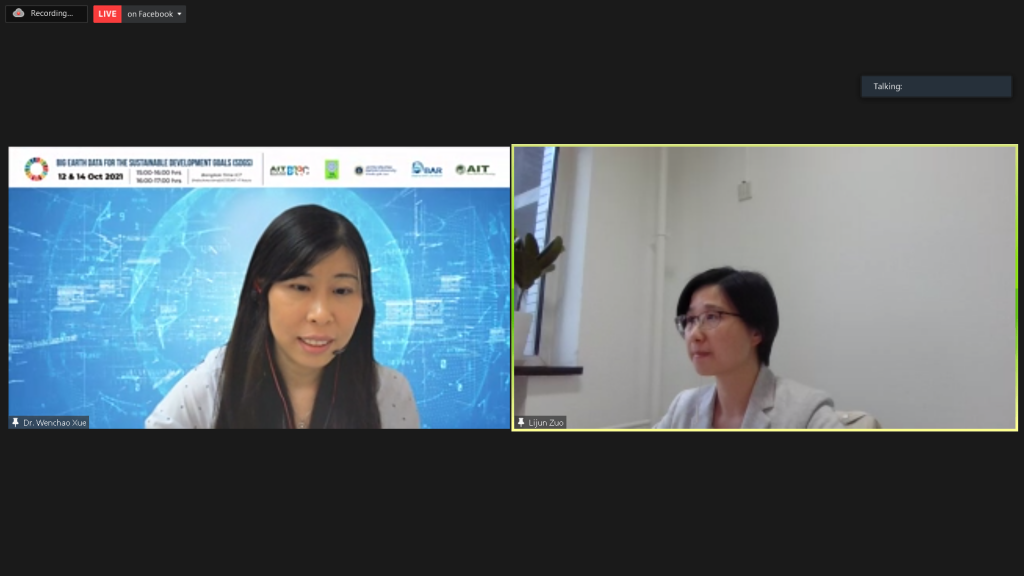
Prof. Haifeng Gu, Third Institute of Oceanography, Ministry of Natural Resources of China
Eutrophication, the gradual increase in the concentration of phosphorus; nitrogen; and other nutrients in an aquatic ecosystem, is characterized by excessive plant and algal growth. “Eutrophication has always been an important issue globally, so the application of big data on eutrophication assessment is of great significance for sustainable development of the aquatic ecosystem,” Prof. Haifeng Gu mentioned. He used plain and detailed explanations to help the audience understand the principles, methods and procedures of eutrophication assessment, and its important role as an indispensable part of maintaining the sustainable development of the marine ecosystem.
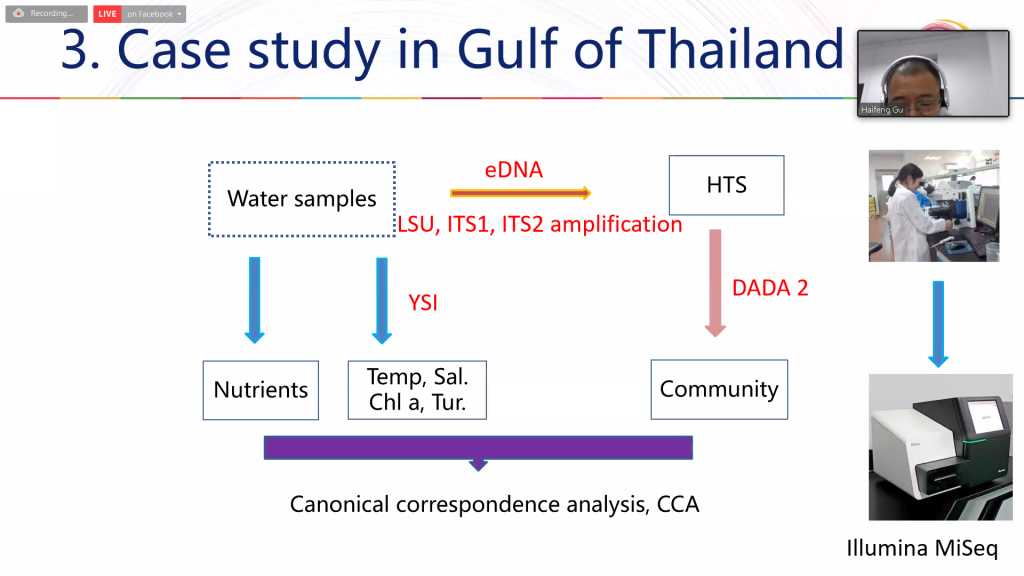
Demonstrating how Big Earth Data can contribute to the urban sustainable development, Dr. Qiang Xing gave an example of monitoring and assessing urban sustainability in China using SDG indicators. He introduced in detail the methodology of monitoring and assessing and the process of big data acquisition and analysis, and comprehensively explained China's urban sustainability in recent years through multiple indicators. “Combining six SDG 11 targets, we have evaluated urban sustainability of 18 counties and cities in Hainan Province, China.” Dr. Xing said.
 In the closing remarks, Dr. Allan. S. Tabucanon, representing the Faculty of Environment and Resource Studies, Mahidol University, expressed gratitude towards all the guest lecturers and partner organizations for making the webinars successful. He expressed his intention of having further cooperation with the guest lecturers by exploring the possibilities of co-developing a course on “Big Earth Data for the SDG Applications” for postgraduate students. “We are talking about SDG 2, 6, 11 and 14, but what we are doing now is SDG 17 – Partnership”, said Dr. Tabucanon. He further added that “We must work together—researchers, governments, local people, and different countries and organizations - to achieve the SDGs at all levels.”
In the closing remarks, Dr. Allan. S. Tabucanon, representing the Faculty of Environment and Resource Studies, Mahidol University, expressed gratitude towards all the guest lecturers and partner organizations for making the webinars successful. He expressed his intention of having further cooperation with the guest lecturers by exploring the possibilities of co-developing a course on “Big Earth Data for the SDG Applications” for postgraduate students. “We are talking about SDG 2, 6, 11 and 14, but what we are doing now is SDG 17 – Partnership”, said Dr. Tabucanon. He further added that “We must work together—researchers, governments, local people, and different countries and organizations - to achieve the SDGs at all levels.”
The recorded event of ‘Big Earth Data for the Sustainable Development Goals (SDGs)’ webinar series can be accessed via the following links:
12 oct (SDG 6 and 2): https://www.facebook.com/watch/live/?ref=watch_permalink&v=3030911097176215
14 oct (SDG 14 and 11): https://www.facebook.com/watch/live/?ref=watch_permalink&v=834993100515653

